
Nanophotonics and nano-optics
Short description
We study interaction of light with various materials at the nanoscale via nanoantennas, and apply this knowledge in creating novel optical metamaterials and metadevices, light-operated information processing and storage, actively-controlled photochemistry and sustainable energy management.
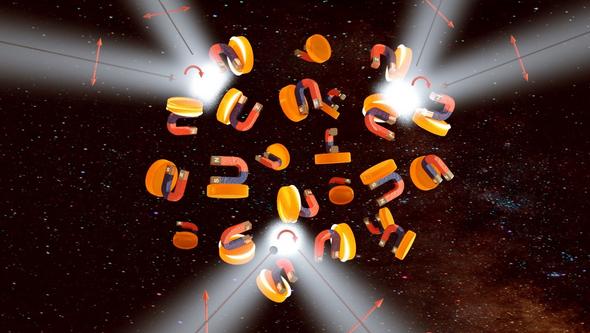
Optical Tellegen metamaterial
Researchers from the Nanophotonics and nano-optics group, jointly with researchers Aalto University (Finland), University of Pennsylvania (USA) and Stanford University (USA) theoretically proposed to create a kind of metamaterial that has been beyond the reach of existing technologies so far. Unlike natural materials, metamaterials can be structurally tailored to have specific properties, meaning scientists can create materials with features on demand.
The new metamaterial takes advantage of the so called nonreciprocal magnetoelectric (NME) effect. The NME effect (also called Tellegen effect) implies a link between specific properties of the material (its magnetization and optical polarization) and the different components of an electromagnetic wave. The NME effect is negligible in natural materials, but scientists have been trying to enhance it using metamaterials because of the technological potential this would unlock.
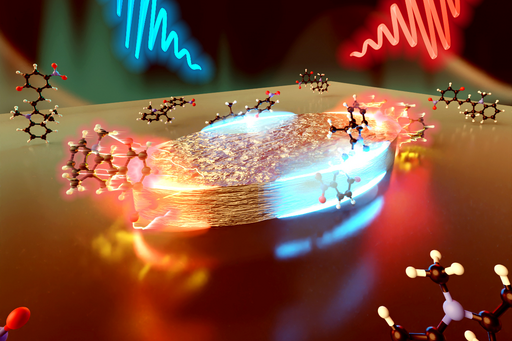
Magnetic storage that runs on light
Researchers at the Department of Physics have carried out projects to make magnetic storage operate with light, making it more energy efficient, smaller, and about 10 000 times faster than what is currently available.
“To achieve this, we take the primely efficient light concentrators, optical nanoantennas, and make them channel light to the nanoscale, where we put magnetic materials,” says Alexandre Dmitriev, professor at the Department of Physics.
News items
-
A pulse of light makes polaritons disappear (July 2023)
-
Light, electrons and energy in the mix (March 2023)
- Ultrafast energy-efficient magnetic memory goes brain-like (December 2022)
- Magnetic storage that runs on light (December 2021)
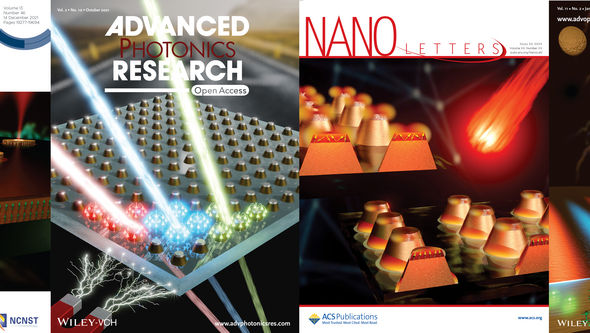
Nano-carpets of gold
We contribute to the Gothenburg Science Festival 2020 with the entry Nano-carpets of gold
"This is an electron microscope image of polymer micro-balls, packed on a surface, covered/wrapped by a thin (10 nanometers) carbon film with gold nano-dots / gold dust (100 nm size) on top. The carbon film itself is actually invisible in the picture. This nanofabrication method, allowing us to wrap and cover things at the nanoscale – just like in real macro-life – was developed by researchers at Chalmers and University of Gothenburg.
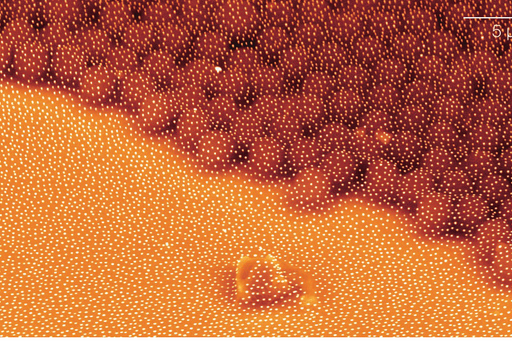
If we can wrap small things, we can protect or add extra functions to them. Wrapping live bacteria this way might help extract all kinds of information from their surface. This could for example be used for bacterial diagnostics – like putting thousands of little sensors on the ‘beast’.
Invisible carbon carpets might also work as membranes in catalysis, since they are very porous. Then the dots are the catalysts, designed to speed up selected chemical reactions when gas flows through them. Since we can stack hundreds of such membranes together, we can save lots of energy on producing various chemical compounds. It can potentially make the production of chemicals ‘greener’ by letting us use less environmentally harmful catalysts."
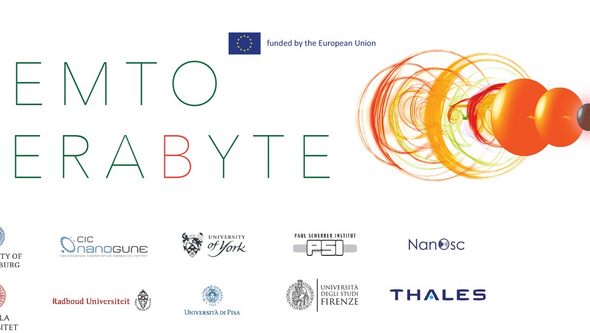
FEMTOTERABYTE
We finished coordinating our massive EU Horizon2020 FET-Open project FEMTOTERABYTE ‘Spinoptical nanoantenna-assisted magnetic storage at few nanometers on femtosecond timescale’, aiming at magnetic hard drives that are 100 times smaller and 10,000 times faster than the ones we use today.
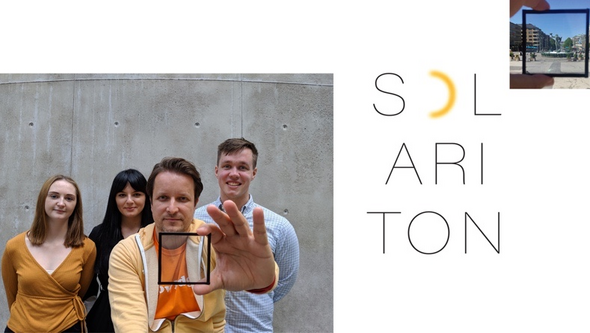
Solariton
Our spin-off project on solar nano-thermal windows taking part in VentureCup Sweden Start-Up 2020. We use nanoantennas on regular glass windows to make them warm-up using sunlight. The glass stays transparent and doesn’t change the color of the sunlight, it is color-neutral. Solariton was a Chalmers School of Entrepreneurship project in 2019-2020.
More highlights
- A new PhD project jointly with Inès Massiot’s group at LAAS-CNRS in Toulouse, France, on saving the planet with nanoantennas and thermoelectro-photovoltaics.
- Reading magnetic molecules as the future ultimate memory units. News piece: Magnetic discovery paves the way for molecular memories
- Collaborative project on how to melt gold at room temperature.
- Public invited lecture within the IDEAS seminar series at the Danish institute for Advanced Studies (DEAS), University of Southern Denmark (SDU), "Light-steering by fridge magnets in nanoscale landscapes".
- Controlling optics with magnetic field
- Patterns that push the limits
Future ultrafast and energy-efficient magnetic memory
With the exponential increase for the data cloud storage needs - we envision the magnetic storage of the future to ‘run on light’, i.e., read/write with light, be more energy-efficient, much smaller and about 10 000 times faster than what’s currently available. To achieve that, we concentrate the femtosecond pulses of light by optical nanoantennas combined with magnets.
- K. Mishra et al., Ultrafast demagnetization in a ferrimagnet under electromagnetic field funneling, Nanoscale 13, 19367 (2021) (journal cover)
- R. M. Rowan-Robinson et al., Direction-sensitive magnetophotonic surface crystals, Adv. Photon. Research 2100119 (2021) (journal cover)
Magnetism in non-magnetic materials
We reveal magnetically tunable optical effect in a special kind of artificial materials, called hyperbolic metamaterials, displaying nontrivial optical properties, such as conductive behaviour along particular spatial directions and insulating behaviour along others. This is a possible step towards future magnetically-controlled optics.
- J. Kuttruff et al., Magneto-Optical Activity in Nonmagnetic Hyperbolic Nanoparticles, Phys. Rev. Lett. 127, 217402 (2021)
- Further reading from our collaborators with this work at the University of Luxembourg
Nanoscale magnetophotonics
Everything you need to know about science & tech of light + magnetism at the nanoscale in our massive (open) review of nanoscale magnetophotonics.
Nanoscale chiral chemistry
Possible future of nanoscale chiral chemistry – on our recent open-access Perspective
Single-molecules magnets
For the first time, the studies of single-molecules magnets go out of the large synchrotron facilities, as the ultra-sensitive detection of the magnetic properties of just a few monolayers of the molecular magnets can now be studied with conventional optical magnetic circular dichroism, strongly enhanced by the nanoantennas. This opens the long-envisioned path towards using single-molecule magnets as the ultimate atom-sized memory units.
Article in Materials Horizons
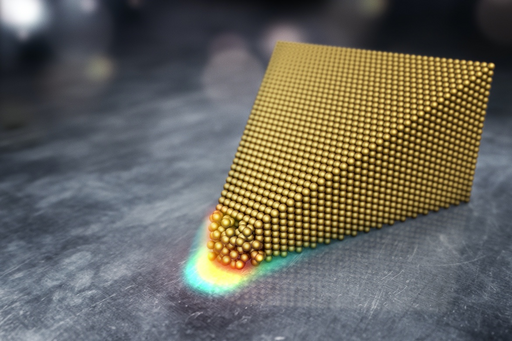
Melting gold
How to melt gold at room temperature at the atomic scale:
- Electric field controlled reversible order-disorder switching of a metal tip surface
- Colloidal lithography nanostructured Pd/PdOx-core-shell sensor for ppb level H2S detection
Optically chiral polarizing transparent surface
We devised optically chiral polarizing transparent surface that can be changed in real time by more than 100% with the externally applied low magnetic field. Future directions include the tunable lenses, on-chip beam-steering (for example, for FaceID light sources), dynamic holograms and other exciting optical functionalities.
- Magnetic control of the chiroptical plasmonic surfaces
- Solar transparent radiators by optical nanoantennas
- Macroscopic magneto-chiroptical metasurfaces
Ultra-thin single-crystalline silicon solar cell
In a large EU (FET-Open) project collaboration, we conceived an ultra-thin (effective thickness about 800 nanometers) single-crystalline silicon solar cell with the efficiency of 9.6%. For comparison – conventional crystalline Si solar cells measure 200 microns in thickness and have the efficiency of slightly above 20%. The prospects are open for the highly efficient and semi-transparent solar cells.
This work is featured in the Nano Futures Inaugural highlights collection.
- Sunlight-thin nanophotonic monocrystalline silicon solar cells
- Highly conformal fabrication of nanopatterns on non-planar surfaces
- Multiscale conformal pattern transfer
- Polarization conversion-based molecular sensing using anisotropic plasmonic metasurfaces
- Disordered nanostructures by hole-mask colloidal lithography for advanced light trapping in silicon solar cells
- Nanophotonics-based low-temperature PECVD epitaxial crystalline silicon solar cells
- Selected by the Editorial Board for Highlights of 2016 (50 years of the Journal of Physics Series)
- Active magnetoplasmonic ruler
Nanoplasmonic biological and chemical sensing
Building on the magnetoplasmonic sensing principles, established in our previous works, we pushed the limits of detection and the figure-of-merit of nanoplasmonic biological and chemical sensing several orders of magnitude.
News feature at Phys.org
- Ultrasensitive and label-free molecular-level detection enabled by light phase control in magnetoplasmonic nanoantennas
- Photonic nanostructures for advanced light trapping in thin crystalline silicon solar cells
- Magnetoplasmonic design rules for active magneto-optics
- Broadband absorption enhancement in ultra‐thin crystalline Si solar cells by incorporating metallic and dielectric nanostructures in the back reflector
- Nanoplasmon-enabled macroscopic thermal management
- Effects of a non‐absorbing substrate on the magneto‐optical Kerr response of plasmonic ferromagnetic nanodisks
- Plasmon−Interband Coupling in Nickel Nanoantennas
- Tuning the magneto-optical response of nanosize ferromagnetic Ni disks using the phase of localized plasmons
- Highly directional bottom-up 3D nanoantenna for visible light
- Mutually synchronized bottom-up multi-nano-contact spin-torque oscillators
- Polarizability and magnetoplasmonic properties of magnetic general nanoellipsoids
- Plasmonic efficiency enhancement of high performance organic solar cells with a nanostructured rear electrode
- Fano interference in supported gold nanosandwiches with weakly coupled nanodisks
- Featured in the Virtual Journal for Biomedical Optics (VJBO)
- Designer magnetoplasmonics with nickel nanoferromagnets
- Oxygen dissociation by concerted action of di-iron centers in metal–organic coordination networks at surfaces: Modeling non-heme iron enzymes
- Optical response of supported gold-based nanostructured arrays
- Featured in the Virtual Journal for Biomedical Optics (VJBO)
- Long-distance indirect excitation of nanoplasmonic resonances
- Plasmonic nickel nanoantennas
- Analyst (invited review)
- Optical label-free nanoplasmonic biosensing using vertical-cavity surface-emitting laser and CCD
- News feature in PhotonicsSpectra
